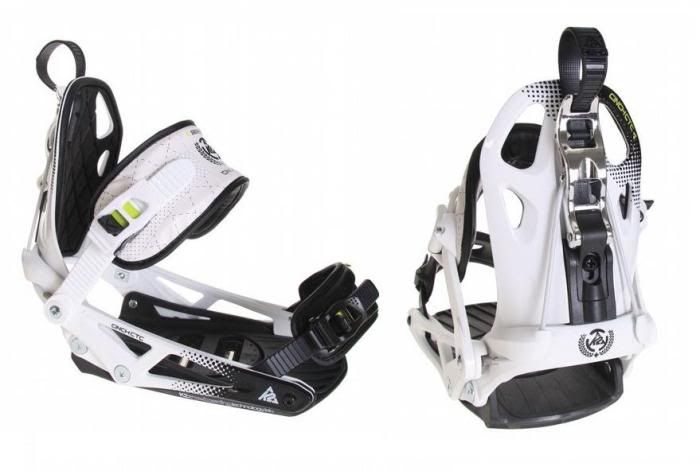

Welcome to the first of [hopefully] many snowboard-specific Product Reviews that I'll be doing. Here's the first, the 2009/2010 K2 Cinch CTC bindings.
I bought these, because I missed the ease and convenience of my old Switch step-ins (circa 1996 or so!). I've seen a lot of Flow rear-entry bindings on the slopes, and the riders seem to really like 'em... but, at the same time, I also wanted a standard two-strap option, just in case I found myself in a situation where the rear-entry option wasn't practical, or even possible to use. Stuck on my ass in a few feet of fresh at Bohemia, or in the [rare] case that the rear-entry system malfunctioned/failed being two notable scenarios. With that in mind, the K2 system was the only option left.
After buying these, and riding them for a few sessions, I realized that I'd pretty much wasted about a hundred and eighty bucks in hard-earned cash. The rear-entry system wasn't nearly as convenient or easy-to-use as I'd imagined it would be. To use it, you have to reach around to your highbacks- an uncomfortable reach, I might add- and un-lock the highback, which requires quite a bit of force, which is magnified by the position of the lever. It's actually pretty hard to get out of. What's more: The lowered highback has a nasty tendency in practice to snag the snow as you're getting off a chairlift, which promptly pulls you around to either:
- Places that you probably didn't want to go, or
- In hapless circles.
Having been frustrated by the highback-release system, I quickly switched to using the two-strap override. Even here, there were problems. The ladder bars are thick and rubbery, which makes sliding on the ratchets a real chore (Unlike harder, standard plastic ladder bars, where the ratchets easily slide up and down for quick and easy straps and de-straps). So, instead of sliding the ratchets down the ladder bars, and then snugging them up by ratcheting them tight... you have to ratchet all the way down the ladder bar, which feels really slow and time-consuming after riding "standard" bindings for so many years.
Using the rear-entry system also resulted in a lot of "pinch points" in my boots, when the straps wouldn't seat quite the same way they did on the run before. Even if you use the releasing highbacks, there's a lot of fidgeting around with the straps to get comfortable, before setting out on a run.

What's more: Due to the Cinch's multitude of pivot points that are required throughout the baseplate and highback to accomodate the rear-entry high-back system, the overall feel of the binding was loose and rubbery... not tight and precise like you'd feel in a more "standard" two-strap/fixed highback binding. Granted, all bindings flex. But: These flex a lot more, and all over the damned place. It made getting an edge locked into a turn a bit less quick, and a lot less comfortable and confident.
For the hundred and eighty clams that I spent on these, I could have easily gotten two pairs of close-out, last-years', two-strap bindings that would have been far easier and more straightforward to use, while giving much more accurate, reliable, and comfortable performance. The most that I can say about these, is that they're great looking bindings. But, as riders? Definitely not worth the money, or the hassles.
Sorry, K2. Nice try, though!
